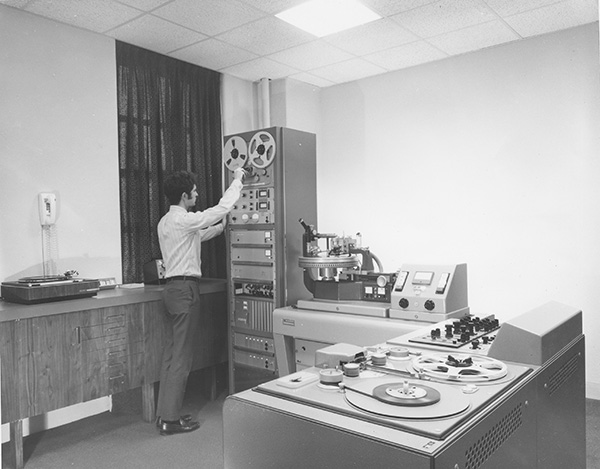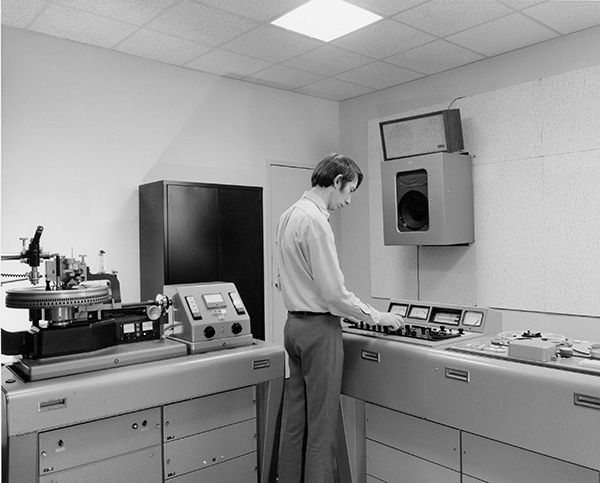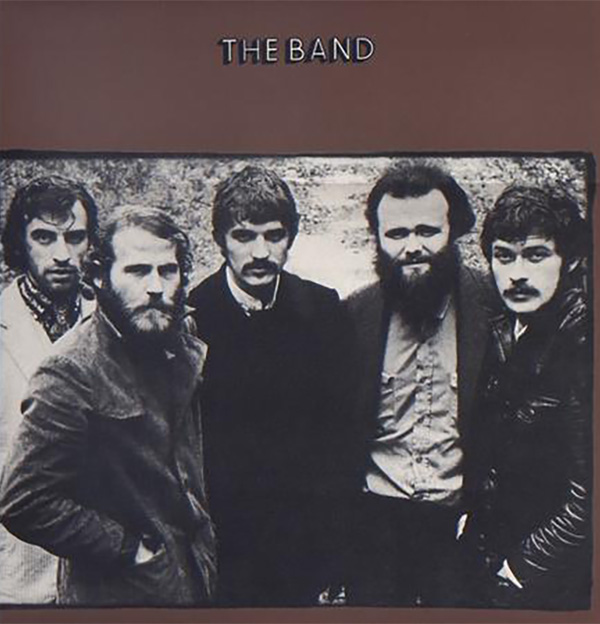| Columns Retired Columns & Blogs |
BOTH of You guys!!

In Part 1 of this interview, which announced that famed mastering engineer Bob Ludwig was retiring, Ludwig discussed his early days as a music-loving student, as a trumpet player, his graduation from Eastman College with a Master's degree in music performance, and how working with legendary engineer and producer Phil Ramone at A&R Studio awakened his interest in how records are made. In this second part, Ludwig talks about how he moved to Sterling Sound, then to Masterdisk, and finally how and why he set up his own studio, Gateway Mastering Studios in Portland, Maine.
The new place in town – Sterling Sound
Ludwig hit a crossroads at A&R. The studio built a stereo mastering room, at 799 7th Ave., and he learned how to wrestle an early Neumann automated lathe and first-generation two-channel stereo cutting head into making "fairly good-sounding" results. Steve Temmer, owner of Gotham Audio and Neumann's US distributor, loaned him a new helium-cooled cutting head, the SX-68. "I was really happy about it. But after living with it for a short time, Temmer said, 'I have to take it back and show it around to the other studios.' I thought, no matter how good I am, there will be a lot of records I cannot beat now without that head. For some reason, A&R would not buy me the head. I was pretty annoyed."
Meanwhile, a new state of the art operation had started, a new kind of business. In December 1967, Doug Sax had opened the first dedicated mastering studio in California; the studio's sole business was to cut records. There were no recording facilities, no sound-for-picture operation—just mastering.

Back in New York, partners Lee Hulko and Joe Paschek established Sterling Sound in October 1968. Brand new in all respects, their facility had a Neumann VMS-66 lathe with—yes—a SX-68 cutter head and new Neumann high-power solid state amplifiers. A Neumann mastering console including equalization and dynamics-control facilities and a state-of-the-art Telefunken M10A tape machine designed with a special preview-audio head to feed the lathe's analog computer, which controlled groove pitch and depth based on loudness, frequency, and phase information from the musical signal, completed the signal chain. The future had arrived.

"I called them up and visited. Lee Hulko ... was a super-smart guy," Ludwig said. "I asked if maybe they needed some help, and they offered me a job." He was paid a salary plus a percentage of the work he brought in, so the new job meant more money, "but I didn't care about that. The only thing I cared about was that cutterhead," he said, only half-jokingly.
He joined Sterling in mid-1969. For a short time, he also worked at A&R, training his replacement mastering engineer, Dave Crawford. The move to Sterling was successful. "We started cutting records and cutting hits right away."
Ludwig says Sterling was unrivalled in technical sophistication and ability. "For a while, nobody else in America had those Neumann amplifiers. ... This was the sound I was looking for. We were able to cut high frequencies on disc that nobody ever heard before, for pop records."
His A&R clients followed him to Sterling. "I brought Leiber and Stoller, Burt Bacharach. Scepter Records became a client." At A&R, Ludwig had cut singles for Scepter including B.J. Thomas's hit, "Raindrops Keep Fallin' On My Head."
Ludwig's first job for Scepter at Sterling was Dionne Warwick's gospel record The Magic of Believing. It taught him another important lesson about mastering. He cut a reference master he thought was good but then took it home to play over the weekend and realized it wasn't as loud sounding as other records of the time. "It wasn't sufficiently loud. I thought, I'm going to lose this gig if I don't make this record sound like a normal record." He figured out how to filter the muddy bass and boost and compress the somewhat dull midrange to get a louder sounding but trackable LP. It worked, and Scepter became a Sterling client.
It was at Sterling that Ludwig made perhaps his most notorious LP cut, the first U.S. master of Led Zeppelin II. "Eddie Kramer [the album's chief engineer] came in and said, 'The guys want this thing to be the loudest record out there.' So I cut it like I was asked. Everyone approved the test pressings." Alas, a copy of the album ended up on the portable record player of a specific teenager—accounts vary whether it was the daughter of Atlantic Records VP Jerry Wexler or of co-founder Nesuhi Ertegun. In any case, the record skipped and Atlantic president Ahmet Ertegun ordered a new, tamer cut, which was made at Atlantic's own studio. Ludwig's cut went on to become a collector's item and an audiophile favorite. He's still annoyed by it all. "Nobody from Atlantic called and said, hey, this thing skips on my daughter's cheap set and asked me to cut a couple dB lower. I would have re-cut it, but nobody called."
"For years, I didn't know there was a problem. The only cuts I saw were mine, [owned by] early buyers and radio stations," he added (footnote 4). Lesson learned, Ludwig later cut Led Zeppelin's Houses Of The Holy without incident.
Also at Sterling, Ludwig said he "broke the union grip" on mastering. Producer Paul A. Rothchild hired him in late 1970 to cut the single of "Me and Bobby McGee" by Janis Joplin. She was a Columbia Records artist, and work rules dictated that Columbia's union engineers cut their records. The Columbia union mastering engineer came to Sterling and Ludwig gave him a choice to use the costly Neumann cutting head and be responsible for replacing it if he broke it or to stand by and let Ludwig do it. "I cut it, and then the grip started to break." The single went to #1 on the Billboard Hot 100 chart.

Pinning Ludwig down on a handful of favorite albums he mastered is basically impossible—the handful becomes an overflowing cornucopia; see the sidebar "Bob's Favorite Cuts"—but he is quick to name his top choice: The Band's self-titled second album, which he cut at Sterling in 1969, soon after he arrived. "That's my favorite of all ... Robbie (Robertson) was there and he was making suggestions. This one stands at the top top, the fact that I was involved with the music that was so iconic."
Ludwig received his first credit on a record sleeve, "Special Thanks," on the inner sleeve of Sly and the Family Stone's There's A Riot Goin' On (footnote 5). It chafes him that mastering credits were not regularly listed prior to 1972 and that it took decades for Grammy Awards to include mastering engineers. Nowadays, he worries about lax metadata standards for streaming tracks (check the credits for a few of your favorite albums and songs on your favorite streaming service—is the mastering engineer named consistently? In many if not most cases, you will not find this information in the credits—or, on albums that have been reissued often, you'll find several mastering engineers listed regardless of who mastered that issue).
A chance meeting at Sterling led Ludwig to a long-time association with equipment designer and entrepreneur Mark Levinson. "This guy gets off the elevator and pops his head through the window of the waiting room at Sterling and yells, 'Do you know you're destroying your sound with transformers?' That was my introduction to Mark Levinson. We got to talking with him and he said, 'you know, if you remove transformers from the circuits in the audio your equipment will sound better.' We followed that, and it can be true." Over the years, Ludwig has used many Levinson-associated products including (at Masterdisk) Levinson's massive HQD hybrid loudspeaker system.
A project toward the end of Ludwig's time at Sterling was especially complex and educational, further honing his craft. Peggy Lee's 1975 album Mirrors (footnote 6) was a Leiber and Stoller project featuring what Ludwig calls their "art songs ... not intended to be pop songs ..., part of their art and craft." He said that during the mastering sessions, the songwriting duo "were particular people being exceptionally particular." "The lyrics were part of the mastering notes; ... they'd circle a word and say 'bring this out more.'" In that time, before mastering-console automation, this involved what Ludwig called "rapidfire moves"—small adjustments to frequency equalization and dynamics done in real-time as the lacquer was cut. He described it as akin to a dance, in time to the music and lyrics. He created copious notes so he could repeat the dance with each re-cut of the lacquer.
Footnote 5: See bit.ly/47j4ngz.
Footnote 6: See discogs.com/release/4662551-Peggy-Lee-Mirrors.


Thank you Robert Ludwig for all of your contributions to the realm of recorded music and setting the bar by which all future recordings of exemplary quality will be measured!! You will be sorely missed but never forgotten!! May your retirement be filled with immense joy!!